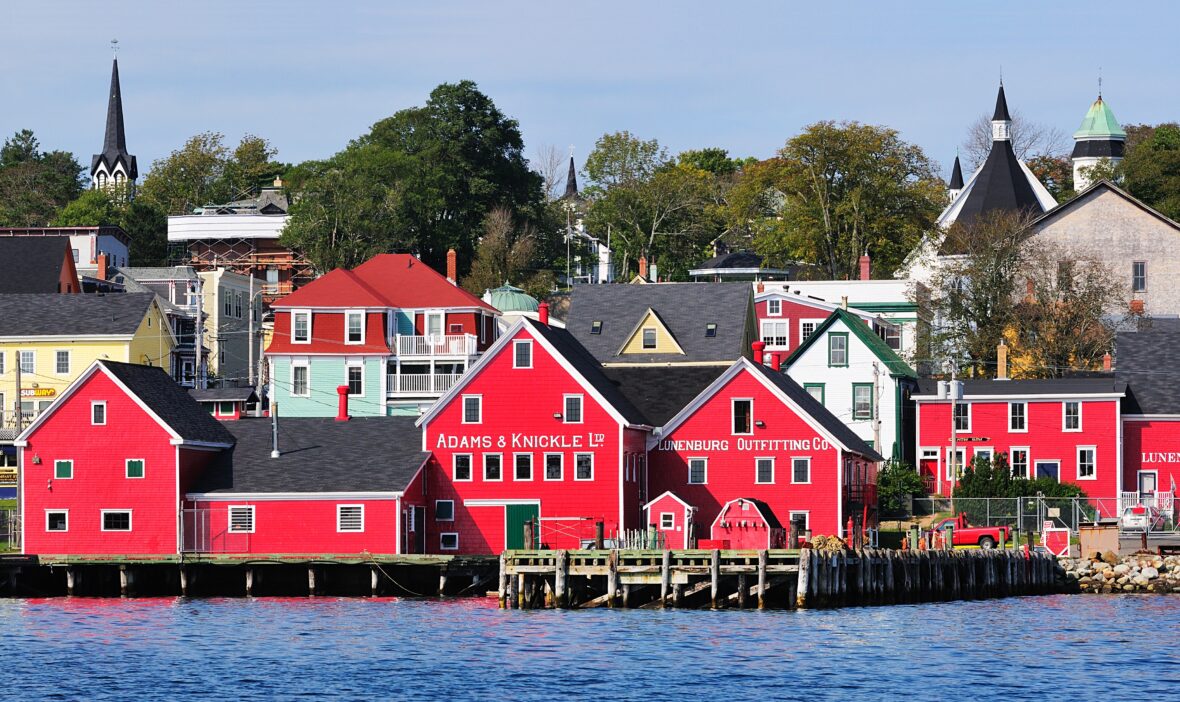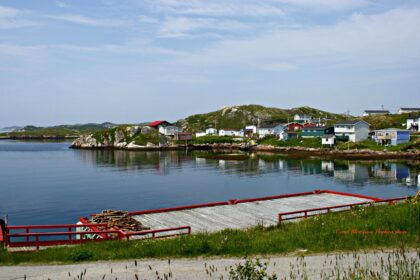Lunenburg is a port town on the South Shore of Nova Scotia, Canada. Founded in 1753, the town was one of the first British attempts to settle Protestants in Nova Scotia in an effort to displace the French colonial Roman Catholic Acadians and indigenous Mi’kmaq. Take a look below for 25 fascinating and interesting facts about Lunenburg, Nova Scotia, Canada.
1. The economy was traditionally based on the offshore fishery and today Lunenburg is the site of Canada’s largest secondary fish-processing plant.
2. The town flourished in the late 1800s, and much of the historic architecture dates from that period.
3. In 1995, UNESCO designated it a World Heritage Site. UNESCO considers the site the best example of planned British colonial settlement in North America, as it retains its original layout and appearance of the 1800s, including local wooden vernacular architecture.
4. UNESCO considers the town in need of protection because the future of its traditional economic underpinnings, the Atlantic fishery, is now very uncertain.
5. The historic core of the town is also a National Historic Site of Canada.
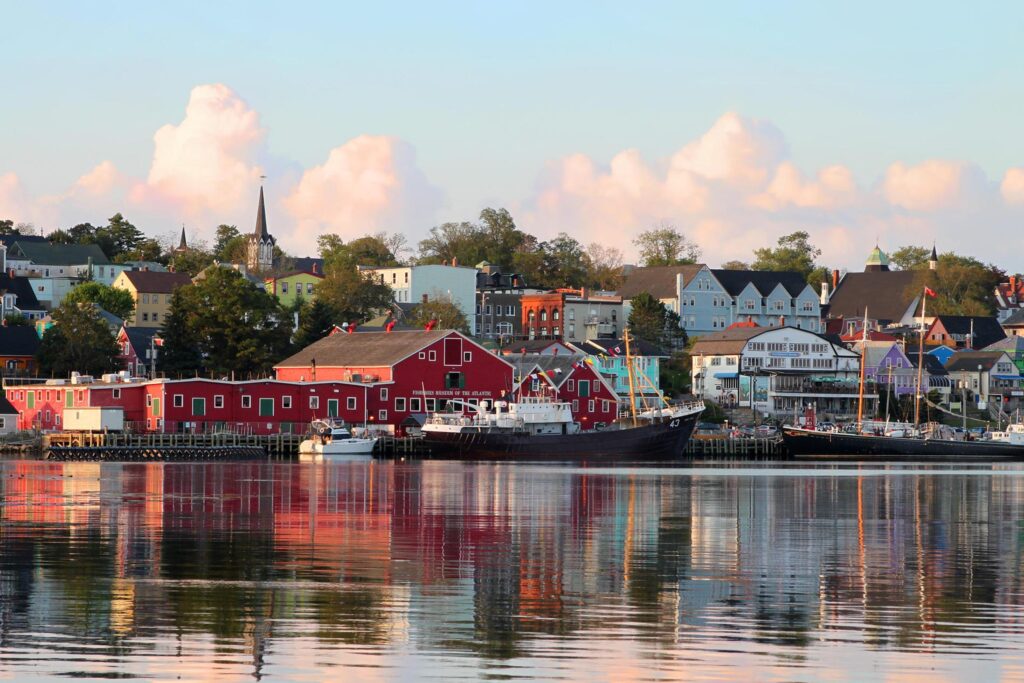
6. Lunenburg was named in 1753 after the Duke of Braunschweig-Lüneburg who had become King George II of Great Britain.
7. The displaced Acadian inhabitants of the site had called it Mirliguèche, a French spelling of a Mi’kmaq name of uncertain meaning.
8. An earlier Mi’kmaq name was āseedĭk, meaning clam-land.
9. The Mi’kmaq lived in a territory from the present site of Lunenburg to Mahone Bay. As many as 300 inhabited the site in the warm summer months.
10. French colonists, who became known as Acadians, settled in the area around the 1620s. The Acadians and Mi’kmaq lived peacefully and some intermarried, creating networks of trade and kinship.
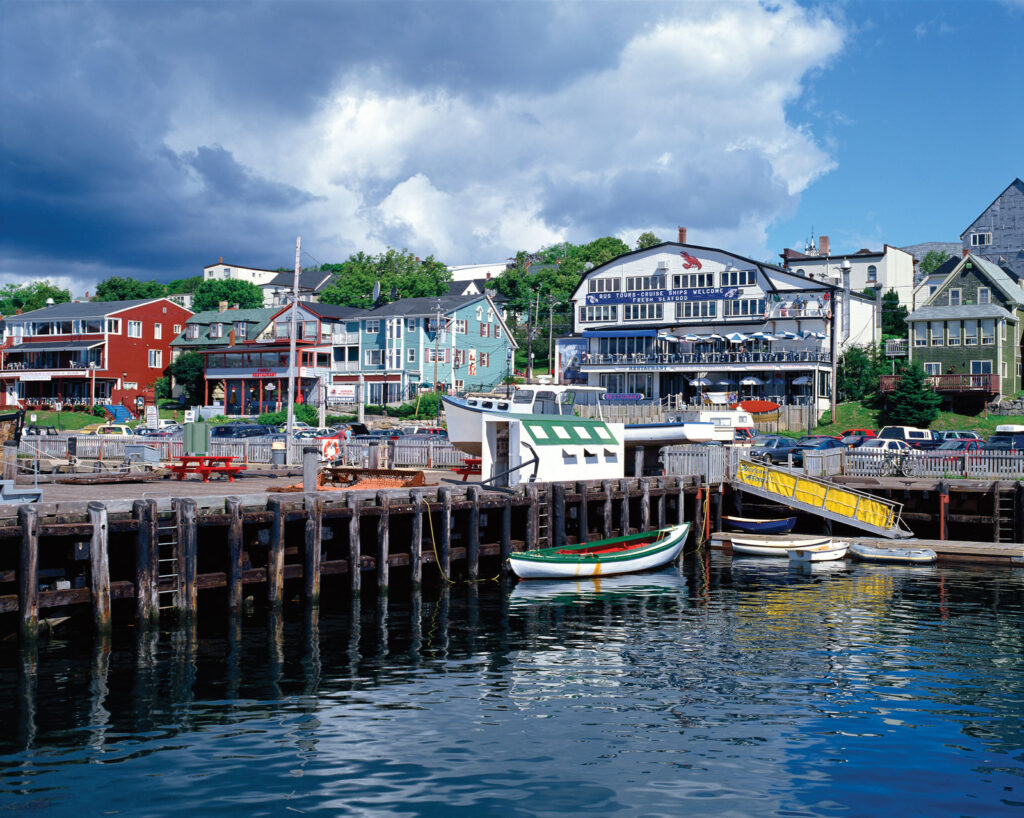
11. In 1688, 10 Acadians and 11 Mi’kmaq were resident with dwellings and a small area of cultivated land. By 1745 there were eight families.
12. When Edward Cornwallis, newly appointed Governor of Nova Scotia, visited in 1749, he reported several Mi’kmaq and Acadian families living together at Mirliguèche in comfortable houses and said they appeared to be doing well.
13. Britain and France carried their military action in Europe in the 1700s to the New World. Under the 1713 Treaty of Utrecht, France ceded the part of Acadia today known as peninsular Nova Scotia to Britain. But the inhabitants of the area did not welcome the new regime.
14. To guard against Mi’kmaq, Acadian and colonial French attacks, the British erected Fort George in 1749 at Citadel Hill Halifax and founded the town of Halifax. Later that year, Cornwallis ordered Mirliguèche destroyed.
15. The British sought to settle the lands with loyal subjects, and recruited more than 1,400 foreign Protestants, mostly artisans and farmers, from Europe in July 1753 to populate the site. Led by Charles Lawrence, the settlers were accompanied by about 160 soldiers. They assembled prefabricated blockhouses and built a palisade along the neck of land where the village was laid out.

16. The settlers spent the summer building shelters for the winter and, not having been able to conduct any fishing or farming, had to be provisioned from Halifax.
17. When the settlers became dissatisfied with the distribution of provisions, they rose in armed rebellion, only to be put down by troops led by Colonel Robert Monckton. Others defected to the Acadian side. In 1754 the town had a sawmill and a store.
18. In 1755, after the expulsion of the Acadians, the British needed to repopulate vacated lands. It offered generous land grants to colonists from New England, which was experience a severe land shortage.
19. Today these immigrants are known as the New England Planters, planters being an old word for colonist. Lunenburg was raided in 1756 by Mi’kmaq and allies, and afterwards.
20. The British responded with the Lunenburg Campaign of 1758. Hostilities with Mi’kmaq ended around 1760.
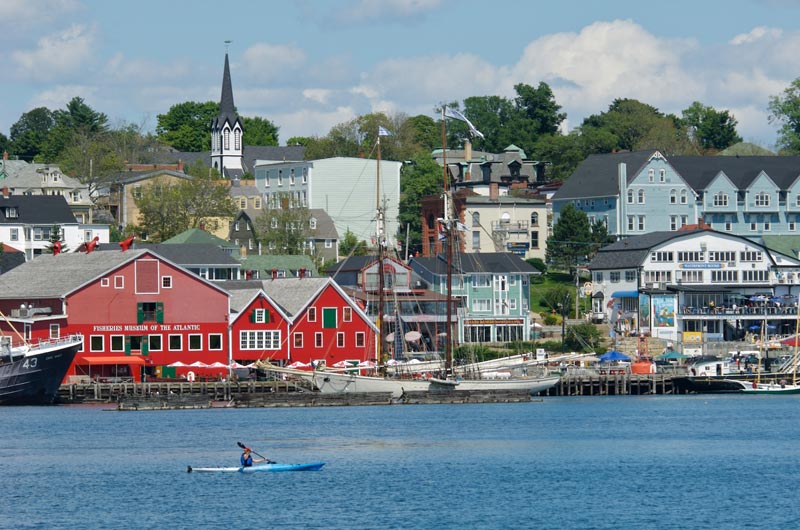
21. During the American Revolution, privateers from the colonies raided Lunenburg, including the 1782 raid, devastating the town. The town was fortified at the beginning of the War of 1812. The British officials authorised the privateer Lunenburg, operated by Lunenburg residents, to raid United States American shipping.
22. Lunenburg is in a natural harbour at the western side of Mahone Bay, about 100 kilometres southwest of the Halifax Regional Municipality.
23. The area is built largely on Cambrian to Ordovician sedimentary deposits. The last glacial period transformed the landscape. Glaciers abraded and plucked at the bedrock during their advances across the country, creating various deposits that vary in thickness, including drumlins, which are a key feature of Lunenburg County.
24. The coastline in the area is heavily indented, and the town is on an isthmus on the Fairhaven Peninsula, with harbours on both the front and back sides.
25. The climate of Lunenburg is humid continental, bordering on an oceanic, with warm summers and mild winters, due to Gulf Stream moderation, which also causes seasonal lag. Generally Lunenburg is cool and rather wet. The average temperature is 6.5 °C. Even the driest month, July, sees 85 mm of rain, while the wettest, December, sees 149 mm. August is the warmest month, with an average temperature of 17.1 °C. February is the coldest with -4.4 C on average.

